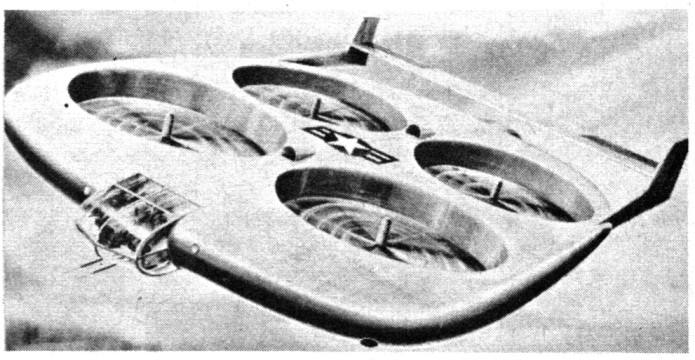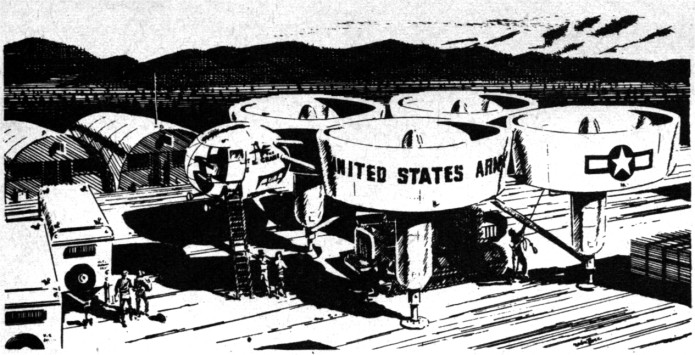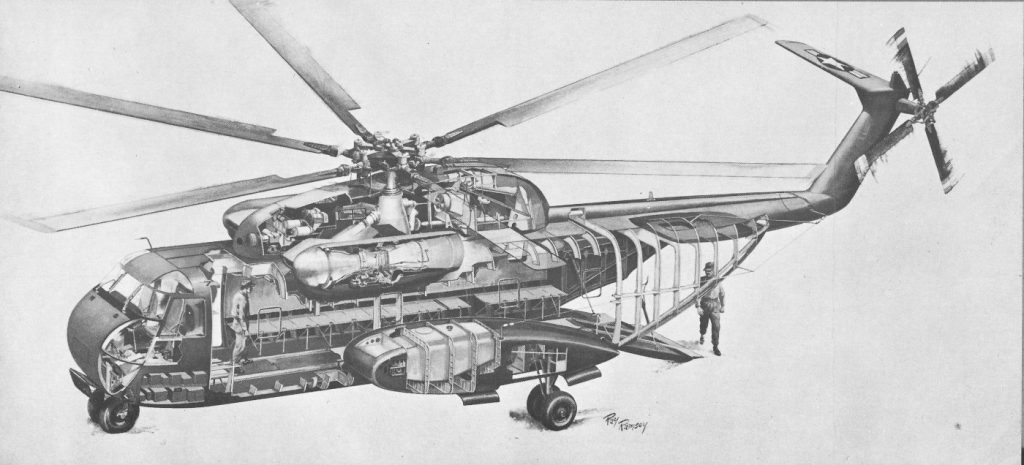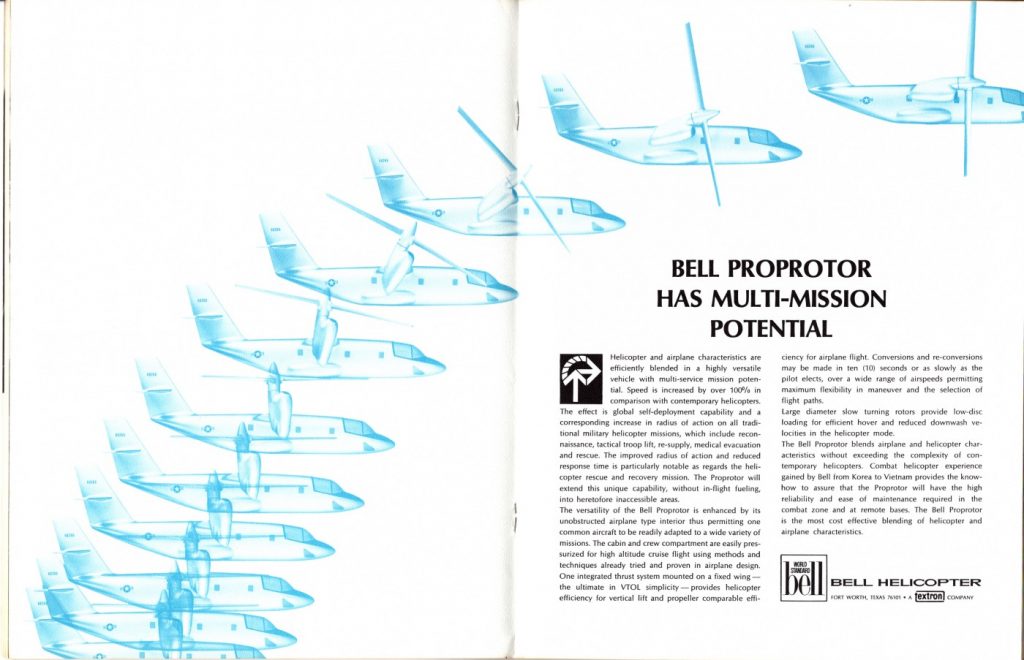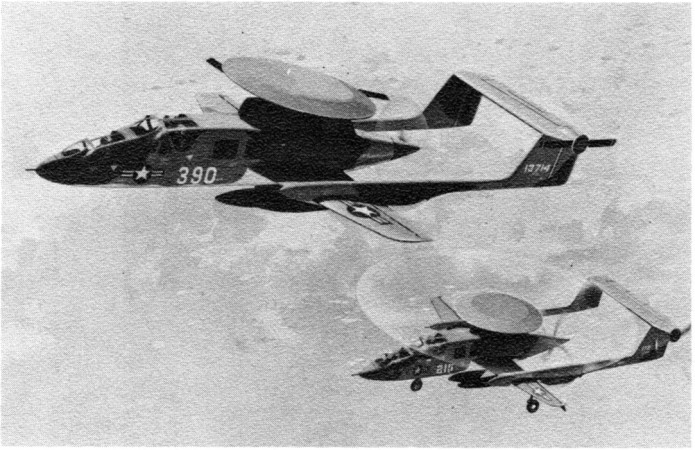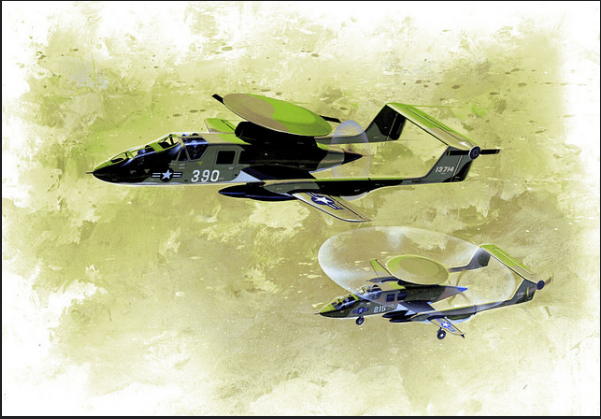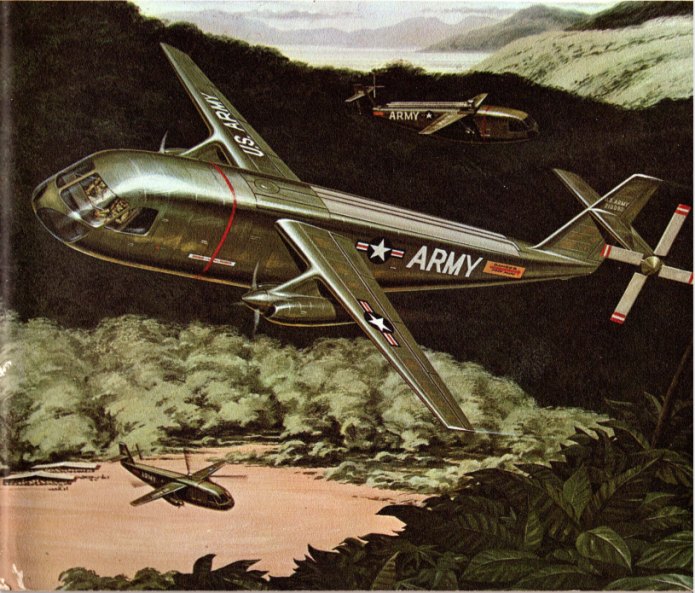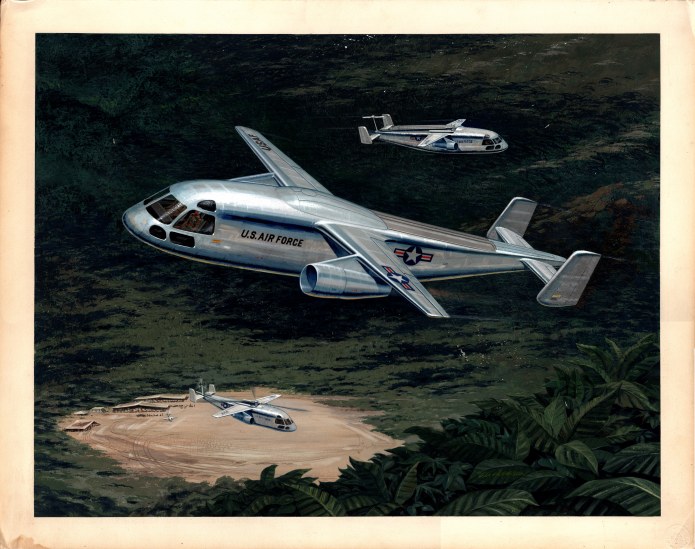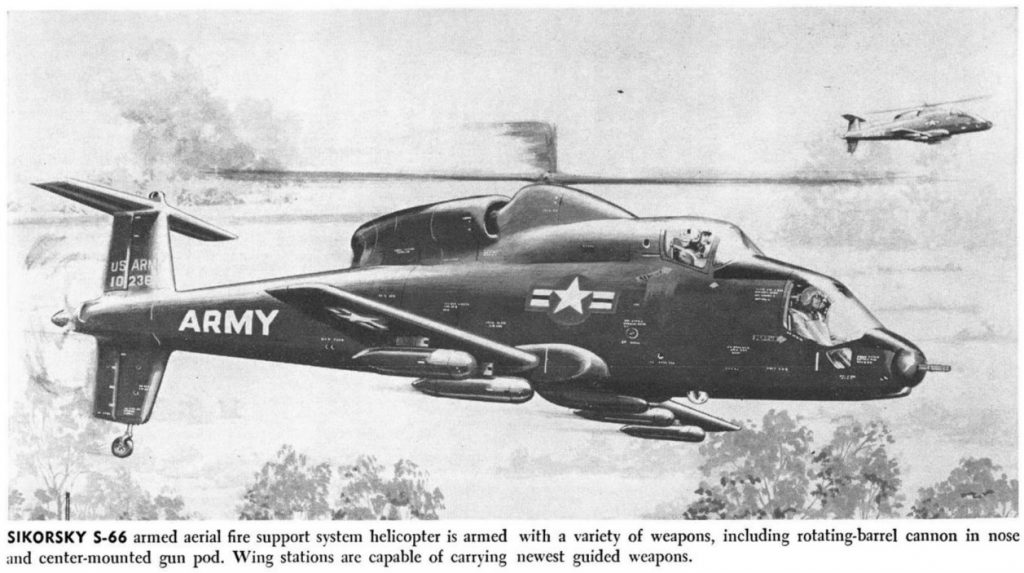A circa 1957 Hiller quadcopter apparently designed for military roles. The cockpit seems to seat two side-by-side, with a twin-gun emplacement underneath. Other than that, not much can be determined from this piece of art.
Once again Patreon seems to be becoming unstable. So I’ve got an alternate: The APR Monthly Historical Documents Program
For some years I have been operating the “Aerospace Projects Review Patreon” which provides monthly rewards in the form of high resolution scans of vintage aerospace diagrams, art and documents. This has worked pretty well, but it seems that perhaps some people might prefer to sign on more directly. Fortunately, PayPal provides the option not only for one-time purchases but also monthly subscriptions. By subscribing using the drop-down menu below, you will receive the same benefits as APR Patrons, but without going through Patreon itself.
A 1967 magazine ad depicting a then-contemporary Bell Helicopter design for a multi-mission tiltrotor. This vehicle was similar in both design and intent to the V-22 Osprey, though with a single central vertical stabilizer, and with a wing mounted near the top of the fuselage but not *above* the fuselage. Consequently, with that tall tail and un-movable wing, this vehicle would not have been foldable for storage on an aircraft carrier.
Dating from late 1965-early 1966, the Ryan “Disk Rotor” was pretty much what it sound like. A helicopter had three rotor blade for vertical takeoff and hovering; as the aircraft gained speed with the use of a pusher prop, the rotors would stop rotating and would fold within a large diameter thin central disk. the disk would serve as an aerodynamic fairing, reducing drag at high speed. The aircraft, for which I’ve spent about 30 years searchign for data on, was apparently meant to be a counter insurgency plane along the lines of the OV-10.
Given the craziness going on, I decided that what the world clearly needs is something consistent. Like, say, me posting one piece of aerospace diagram or art every day for a month or so. So I’m going to do that. But in order to keep people from getting too complacent, I’m posting some of them on this blog, some on the other blog. Why? Because why not, that’s why. I’m slapping the posts together now and scheduling them to show up one at a time, one a day. Given the pandemic… who knows, this little project might well outlive *me.*
So, check back in (on this blog or the other) on a daily basis. Might be something interesting.
A piece of Lockheed concept art circa 1966 depicting a concept for a stowed-rotor helicopter, capable of efficient hovering performance as well as efficient high speed forward flight. This design is related to though distinct from the design depicted in artwork HERE. Note that the backgrounds of the two paintings share a lot of similarities… same ground structures, same leaves in the lower right. I don’t know if this means that one painting was copied from the other, or if one painting was painted *over* the other. In which case… as noted on the other post, I actually own that other piece of artwork. Buried under that upper layer of paint might be *this* image. Ain’t no way I’m going to scrape the paint off just to check, but the technology exists to X-Ray it to look for what’s buried underneath. Not that I’m going to do *that* either…
This aircraft is shown operating in Viet Nam, in US Army colors. This would have irritated the hell out of the US Air Force; by 1966, the USAF was to have control of all fixed wing combat aircraft. The role for this aircraft in Viet Nam would have been search and rescue rather than the transport of troops or ground attack, but still the USAF would have objected.
This piece of art came from a magazine article published in 1966. The full article has been scanned and saved as a PDF, made available to all $4 and up APR Patreons and Monthly Historical Document Program subscribers. it has been uploaded to the 2020-01 APR Extras folder on Dropbox for Patreons and subscribers. If interested in this piece or if you are interested in helping to fund the preservation of this sort of thing, please consider becoming a patron, either through the APR Patreon or the Monthly Historical Document Program.
Some years ago I scored some aerospace concept art off ebay. This is not an unusual occurrence; I’ve procured a great many lithographs there. But this one was different… it was the *actual* original painting created in the mid-60’s. At the time I couldn’t really get a good scan of it, but a change in scanners a while back, coupled with the recent move and revival of the “scan everything” project allowed me to finally digitize the thing.
The image depicted a composite aircraft that used stowable rotors for VTOL and hover like a helicopter, and turbofan engines for efficient fast forward speed. As shown here it is operating in Viet Nam in a combat search and rescue role, something the Lockheed CL-945 (a very similar design) was intended for.
The full image is far bigger (a bit bigger than 10X the linear dimensions than the version above) and has been made available as a thank-you to APR Patreon and Historical Documents Program patrons at the above-$10-per-month level. If interested in this piece or if you are interested in helping to fund the preservation of this sort of thing, please consider becoming a patron, either through the APR Patreon or the Monthly Historical Document Program.
In 1964 Lockheed put forward a design in the US Army’s Advanced Aerial Fire Support System (AAFSS) program that would eventually win and become the AH-56 Cheyenne. But Lockheed was not alone in tendering a proposal: Sikorsky entered their S-66 design.
Both helicopters would have been advanced and fast. Lockheed made the AH-56 fast by adding a pusher prop to the tail, just aft of the conventional anti-torque rotor. But Sikorsky went a slightly different route: the S-66 used the “rotaprop” tail. This combined anti-torque duties with forward thrust in a single mechanism… a single somewhat complicated mechanism that could turn the sideways-thrusting anti-torque rotor 90 degrees to point it aft, providing forward thrust. This would have decreased drag and potentially decreased weight, but at added technical risk compared to the relatively simple solution of just adding a dedicated pusher prop. In late 1965, the Army decided that the risk was too high, and went with Lockheeds design.
The S-66 design got a fair amount of publicity during the contest, but I’ve never actually run across the proposal documentation or design diagrams. A few photos of a display model and a single cutaway drawing are presented HERE. Below are some magazine illustrations of the S-66. It would have been an impressive helicopter had it been built and if it had been successful, looking not unlike a sleeker version of the Mil 24 Hind attack helicopter.
